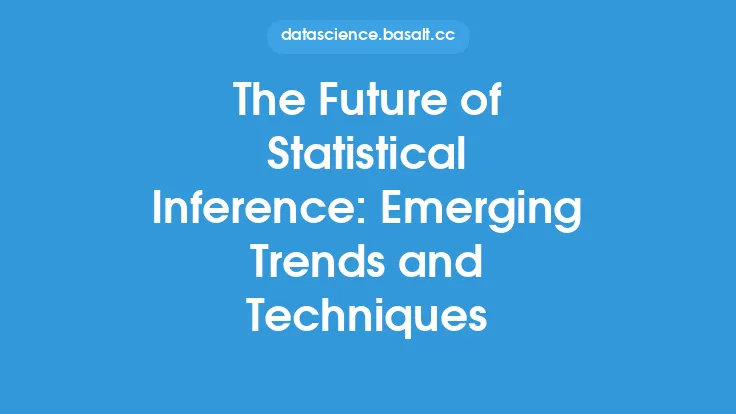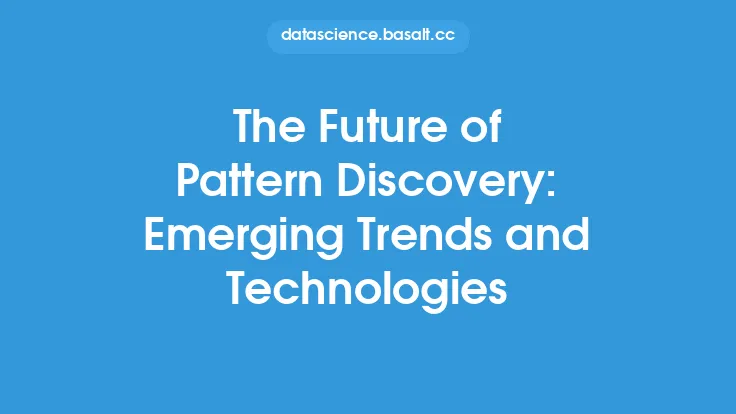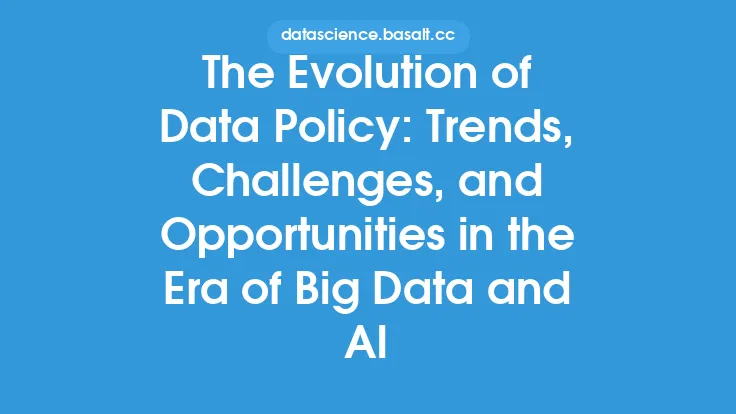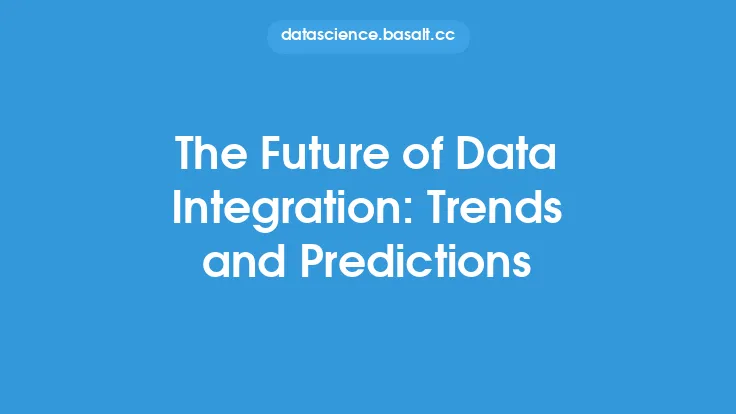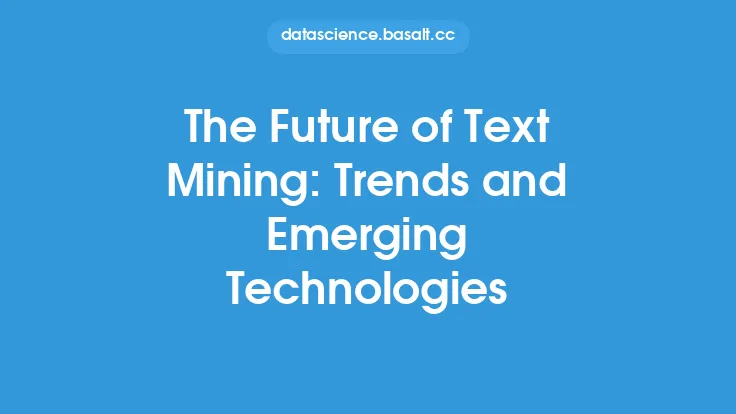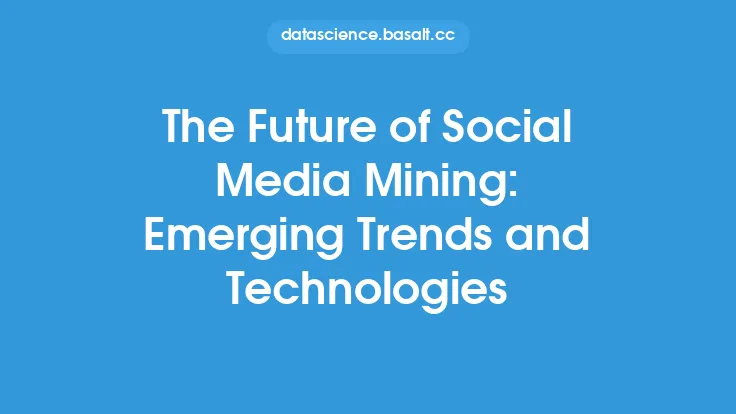The field of computer vision has experienced tremendous growth in recent years, driven by advances in machine learning, the increasing availability of large datasets, and improvements in computational power. As a result, computer vision has become a crucial component of various applications, including self-driving cars, facial recognition systems, and medical imaging analysis. In this article, we will explore the future of computer vision, highlighting the trends and opportunities that are expected to shape the field in the coming years.
Current State of Computer Vision
Computer vision is a subfield of machine learning that focuses on enabling computers to interpret and understand visual data from the world. The current state of computer vision is characterized by the widespread adoption of deep learning techniques, particularly convolutional neural networks (CNNs), which have achieved remarkable success in various computer vision tasks such as image classification, object detection, and segmentation. The availability of large datasets, such as ImageNet and COCO, has also played a crucial role in advancing the field by providing researchers with the necessary data to train and evaluate their models.
Emerging Trends in Computer Vision
Several emerging trends are expected to shape the future of computer vision. One of the most significant trends is the increasing use of transfer learning, which involves pre-training models on large datasets and fine-tuning them on smaller, task-specific datasets. This approach has been shown to be highly effective in various computer vision tasks, particularly in situations where the amount of labeled data is limited. Another trend is the growing interest in explainable AI (XAI), which aims to provide insights into the decision-making processes of computer vision models. XAI is essential for building trust in computer vision systems, particularly in high-stakes applications such as healthcare and autonomous driving.
Advances in Deep Learning Architectures
Recent advances in deep learning architectures are expected to play a significant role in shaping the future of computer vision. One of the most promising architectures is the transformer model, which has achieved state-of-the-art results in various natural language processing tasks. The application of transformer models to computer vision tasks, such as image classification and object detection, is an active area of research, with several studies demonstrating their potential. Another area of research is the development of more efficient and scalable deep learning architectures, such as mobile nets and shuffle nets, which are designed to run on resource-constrained devices.
3D Computer Vision and Scene Understanding
3D computer vision and scene understanding are critical components of various applications, including robotics, autonomous driving, and virtual reality. Recent advances in 3D reconstruction, such as structure from motion and stereo vision, have enabled the creation of highly accurate 3D models from 2D images. The integration of 3D computer vision with other sensors, such as lidar and radar, is also an active area of research, with several studies demonstrating the potential of multi-modal fusion for scene understanding.
Computer Vision for Healthcare and Biomedical Imaging
Computer vision has numerous applications in healthcare and biomedical imaging, including disease diagnosis, patient monitoring, and medical image analysis. Recent advances in deep learning have enabled the development of highly accurate computer vision models for various medical imaging tasks, such as tumor detection and segmentation. The integration of computer vision with other modalities, such as electronic health records and genomic data, is also an active area of research, with several studies demonstrating the potential of multi-modal fusion for personalized medicine.
Computer Vision for Autonomous Systems
Computer vision is a critical component of autonomous systems, including self-driving cars, drones, and robots. Recent advances in deep learning have enabled the development of highly accurate computer vision models for various autonomous driving tasks, such as object detection, tracking, and scene understanding. The integration of computer vision with other sensors, such as lidar, radar, and GPS, is also an active area of research, with several studies demonstrating the potential of multi-modal fusion for autonomous navigation.
Challenges and Limitations
Despite the significant advances in computer vision, there are several challenges and limitations that need to be addressed. One of the most significant challenges is the lack of diversity in datasets, which can result in biased models that perform poorly on unseen data. Another challenge is the need for large amounts of labeled data, which can be time-consuming and expensive to obtain. The development of more efficient and scalable deep learning architectures, as well as the integration of computer vision with other modalities, are essential for addressing these challenges.
Future Directions
The future of computer vision is exciting and rapidly evolving, with several emerging trends and opportunities expected to shape the field in the coming years. One of the most significant future directions is the development of more generalizable and adaptable computer vision models, which can learn from limited data and adapt to new environments. Another future direction is the integration of computer vision with other modalities, such as natural language processing and robotics, to create more comprehensive and interactive systems. The application of computer vision to various real-world applications, including healthcare, autonomous driving, and virtual reality, is also an active area of research, with several studies demonstrating the potential of computer vision to transform these fields.
Conclusion
In conclusion, the future of computer vision is bright and rapidly evolving, with several emerging trends and opportunities expected to shape the field in the coming years. The development of more generalizable and adaptable computer vision models, the integration of computer vision with other modalities, and the application of computer vision to various real-world applications are essential for advancing the field and creating more comprehensive and interactive systems. As computer vision continues to advance, we can expect to see significant improvements in various applications, including healthcare, autonomous driving, and virtual reality, and the potential for computer vision to transform these fields is vast and exciting.
